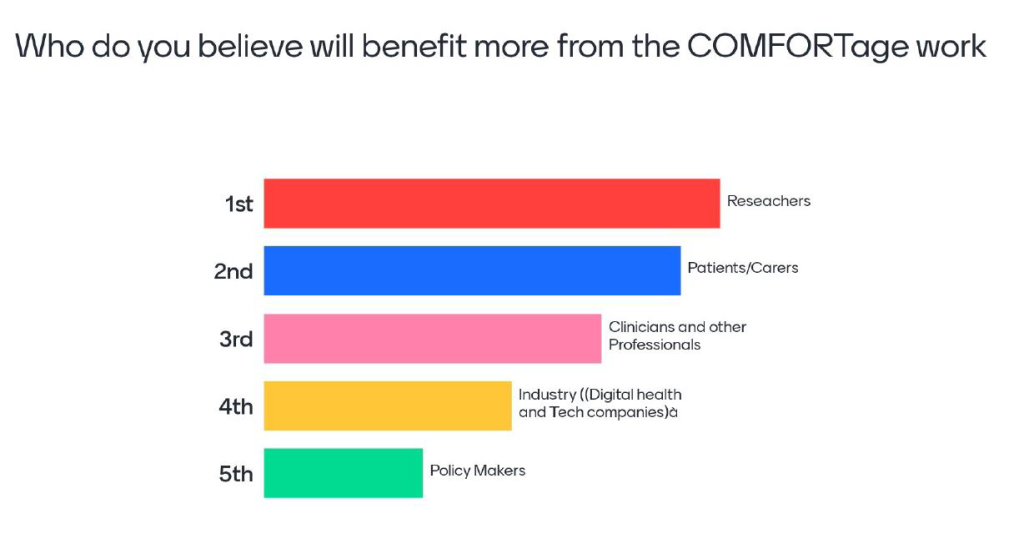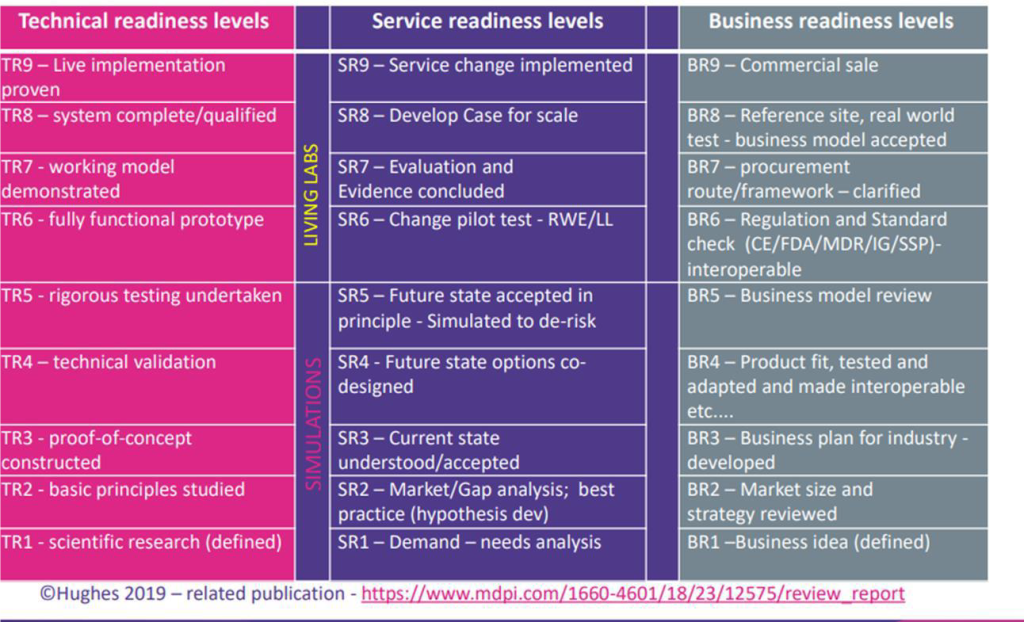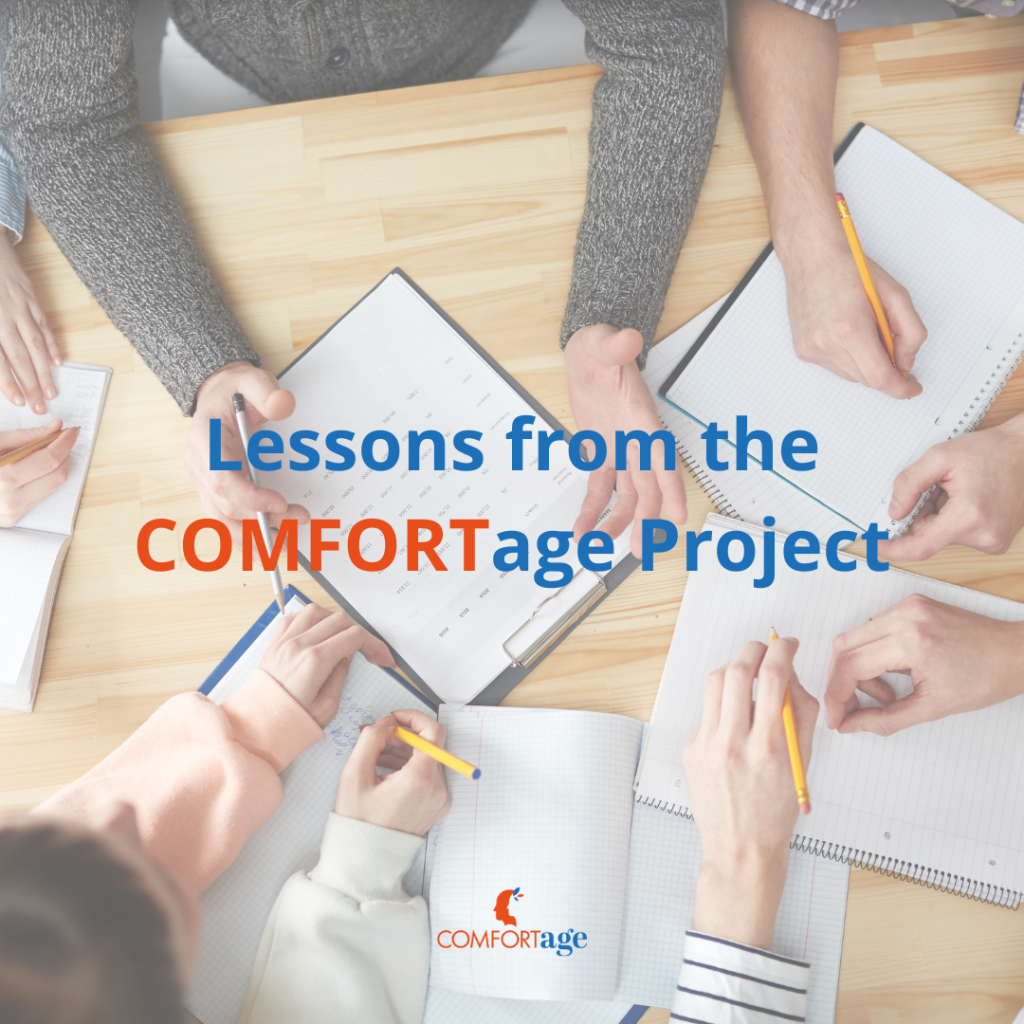Unlocking Innovation in Dementia and Frailty Prevention and Management: Lessons from the COMFORTage Project
Innovation in Dementia and Frailty Prevention and Management: Maximising impact
The rise of non-communicable diseases (NCDs), cognitive decline, dementia, and frailty among ageing populations poses critical challenges to healthcare systems worldwide. The COMFORTage project addresses these challenges by integrating innovative digital solutions using artificial intelligence (AI) to deliver personalized care. By building on lessons learned from previous EU-funded projects, COMFORTage aims to revolutionize how healthcare systems manage dementia and frailty prevention.
This article explores lessons learnt from past relevant projects, highlights the Key Exploitation Results (KERs) of the COMFORTage project and also describes the strategy proposed by COMFORTage to support innovation.
COMFORTage keywords: Frailty/Dementia, Prevention, Multimodal Data and AI
The success of COMFORTage lies in its capacity to reuse, consolidate and integrate existing state of the art technical components and applications but also to make full use of both existing historical retrospective and prospective data made available by pilots. Those data are of very different nature and are provided by different systems involving clinicians, technicians and patients: they include for example cerebrospinal fluid biomarkers, blood samples, neuropsychological assessments, medical examinations, MRI, EEG, sleep, activity and other patient targeted questionnaires, dietary intake, sleep measures from wearables, data from serious games. Data have been produced at different moments and in nine different countries making their integration challenging, especially in the absence for most of them of commonly agreed standards. COMFORTage will use Artificial Intelligence to support first of all each pilot individually in their specific research and/or intervention objectives but will also consider how data from all pilots can be used to support policy making, social and technological innovation even after the end of the project.
Both dementia and frailty are complex clinical concepts which require a highly personalised approach. Each patient is different and behind the term dementia one can find many different conditions, objective or subjective, mild or severe, stable or evolutive. The causal factors which influence dementia and frailty are also numerous, but we know today that the 12 key factors contributing to dementia are modifiable although the multifactorial nature of dementia gives no certainty on preventable cases. Nevertheless it is generally estimated that 40-45% of all dementia cases worldwide can have been prevented if associated risks can be mitigated early enough.
Key Lessons from Past Projects
COMFORTage has surveyed no less than 23 EU projects which focused and dementia in the last 10 years with the objective to take on board as many lessons learnt as possible. We reproduce here the most important lessons learnt. The full report available here provides more comprehensive information and direct links to studied projects. Aside from identifying useful resources and tools as inputs for the project, this review will allow the project to capitalise on many lessons learnt.
Key Insights on User-Centered Design and Technology Adoption
The most recurrent lesson is to develop an innovative co-creation approach which privileges users’ adoption with a clear focus on usability and simplicity. User interfaces should also receive a top attention and offer as much as possible alternatives, ensuring adaptability to user needs. Managing emotional attachments are also crucial for long-term integration. Additionally, the reliance on digital tools as complements to healthcare professionals stresses the importance of trust and social acceptance in their adoption. The review also demonstrated the need to develop a testing and validation strategy which should evaluate in real situation the capacity of selected/developed technology to be used in a routine manner before validating it for the use by the real pilots to avoid massive drop out. It was also clear that costs elements to be supported by end-users need to be considered from the start.
In term of machine learning, making sure the project has access to the volume and quality of data needed to train the algorithms at project start is an absolute prerequisite. As it is also for the need to rely on advanced machine learning models to interpret diverse data types and for consensus in clinical definitions to guide analysis, to overcome the complexity of neurodegenerative diseases and the heterogeneity of frailty phenotypes, which present substantial challenges in developing unified frameworks for analysis and prediction.
Opportunistic screening, especially in early stages of frailty, is deemed crucial for effective prevention and treatment and integrated care models that blend educational, empowerment, and rehabilitative strategies are essential for a holistic approach to frailty management.
Many projects have also been calling for longer studies to collect more usable and validated evidence. Making sure all data collected by the project can be reused by others should thus be a specific project objective.
Who are the main project beneficiaries?
COMFORTage wants to have a global impact on the frailty/dementia ecosystem. It will also provide important contributions to cross-cutting issues which are common to all health domains.
However, during the first exploitation workshop in Bucharest in November 2024, project participants have been asked to rank the categories of stakeholders who will mostly benefit from the project outcomes.
As outlined by the figure below, the researcher comes on top of the list, followed by patients/carers, clinicians, Industry and finally policy-makers. The “research” component of COMFORTage is indeed common to all pilots while a number of pilots are taking place in social and community settings explaining partially the third ranking of healthcare professionals.
Industry is very much involved in the project but has more indirect benefits. Finally, the connexion with policy-makers will require specific attention from the project in order to ensure key knowledge transfer of direct use for policy-making.

Linking exploitation and innovation
Each of the 11 COMFORTage pilots has its specific goal and is anchored in a specific clinical and social reality. Each one will bring its specific contribution focusing on primary, secondary or tertiary prevention or a combination of those. But they will all use the same platform to achieve their goal and will rely on the same libraries. The pilots which include interventions will be using an extended number of components and functionalities integrated with the platform. But all pilots will have available a decision support dashboard which will provide them with a predictive analysis capacity.
A Multilevel Approach to Exploitation and Innovation
Within COMFORTage we use a multilevel approach to exploitation and innovation: we of course consider in priority the main technical project developments, but we also analyse the innovations brought forward by individual pilot or individual partner. Those can be of a technical, clinical, organisational or even ethical nature.
Diverse Paths for Exploitation and Innovation
Likewise, in term of exploitation we pursue both a market and non-market approach considering thus different exploitation paths for each of the results obtained. Developing an original and efficient pre-testing. Adapting the role and profile of a healthcare or social professional. Developing smart and interactive care pathways. Re(using) smartly existing data sources. Contributing to improvement or enrichment of standards. All those are also innovations and can follow different exploitation paths, which are not necessarily ONLY business driven.
Evaluating Project Results Through Multiple Perspectives
When evaluating the capacity to use the project results we also want to use a triple perspective. Aside from the traditional technology readiness level (TRL) we are also referring to two other scales: one related to the service readiness level (SRL) and another one related to the business readiness level (BRL).

The Role of Artificial Intelligence in COMFORTage
The use of Artificial Intelligence is a core aspect of COMFORTage. The Virtualized AI-Based Healthcare Platform (VHP) and the Training & Educational Toolkit (TET/TEM) are the main global- project level- product like outcomEs. The VHP represents an integrated data and knowledge management system designed to consolidate multimodal data streams, providing robust support for dementia care and frailty management.
Integration with Data-Sharing Initiatives
Complementing this, the TET/TEM serves as an educational platform aimed at enhancing digital and health literacy among older adults, caregivers, and healthcare professionals. Beyond these core outputs, the project incorporates additional tools for personalized treatment, digital twins, virtual assistants, and AI-powered behaviour change mechanisms, including innovations driven by clinical partners that often receive less attention in traditional market analyses. The exploitation of those two key results is also highly dependent on its capacity to connect with identified existing relevant perennial data sharing initiatives and infrastructures. The libraries and the big data repository sheltered by the VHP need also to be considered specifically, in the context for example of the new European Health Data Space (EHDS) Regulation. Those specific results are indeed directly tangible and are indeed potentially platform independent.
Conclusion
Chasing and evaluating innovation from very different perspectives, identifying several relevant exploitation paths and considering both a market and non-market approach to exploitation are the three main pillars of the COMFORTage exploitation strategy. Often exploitation related activities are only launched during the last period of the project. This is not true for COMDORtage: The early start of this activity should allow to finetune the workplan in such a way that specific activities needed to support exploitation are sufficiently and timely prioritised in order to maximize impact.
**Article written by EHTEL (the European Health Telematics Association), a key partner in the COMFORTage project.
